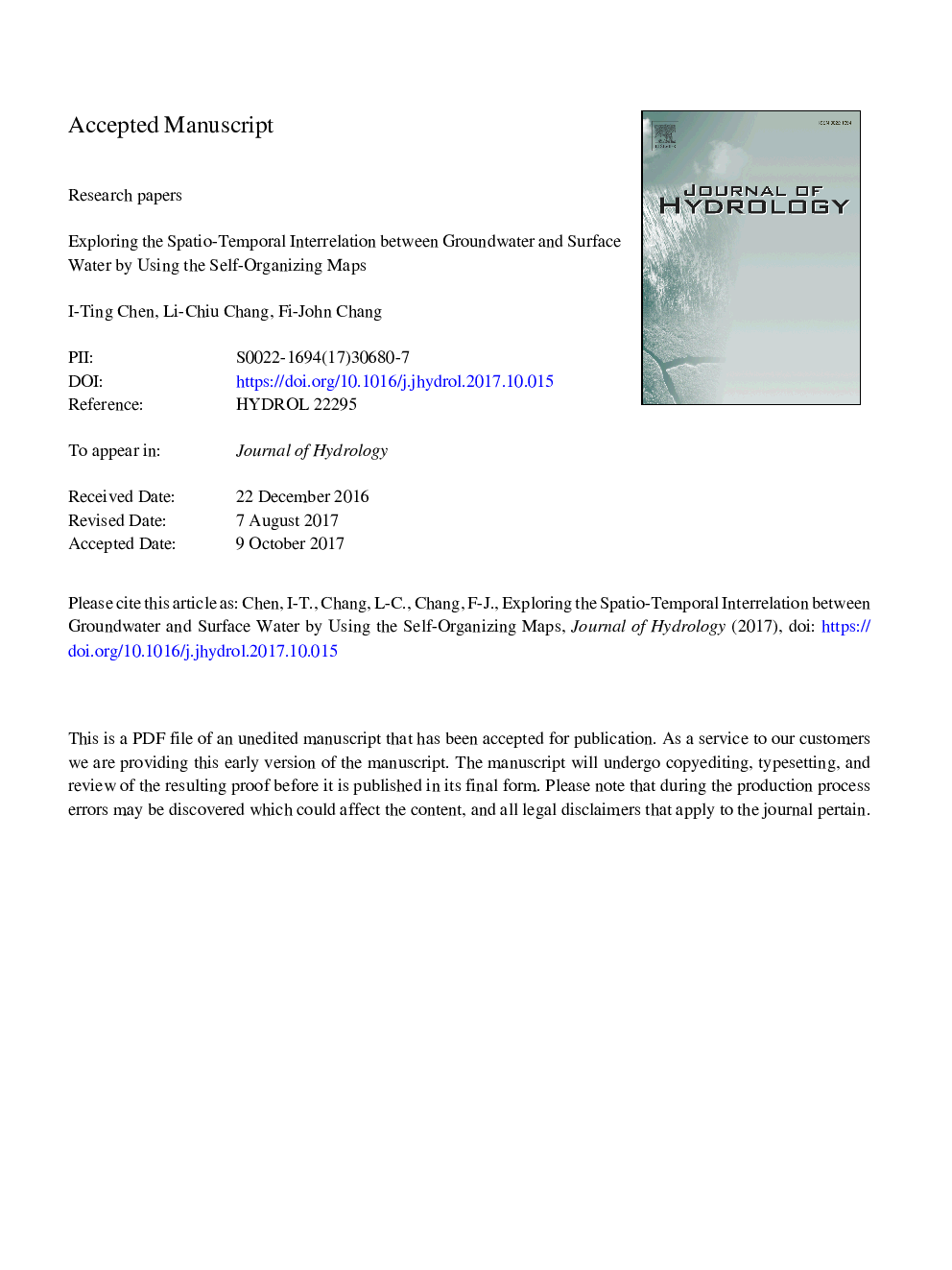| کد مقاله | کد نشریه | سال انتشار | مقاله انگلیسی | نسخه تمام متن |
|---|---|---|---|---|
| 8895108 | 1629898 | 2018 | 34 صفحه PDF | دانلود رایگان |
عنوان انگلیسی مقاله ISI
Exploring the spatio-temporal interrelation between groundwater and surface water by using the self-organizing maps
ترجمه فارسی عنوان
بررسی رابطه بین فضایی و زمانی بین آب های زیرزمینی و آب های سطحی با استفاده از نقشه های
دانلود مقاله + سفارش ترجمه
دانلود مقاله ISI انگلیسی
رایگان برای ایرانیان
کلمات کلیدی
موضوعات مرتبط
مهندسی و علوم پایه
علوم زمین و سیارات
فرآیندهای سطح زمین
چکیده انگلیسی
In this study, we propose a soft-computing methodology to visibly explore the spatio-temporal groundwater variations of the Kuoping River basin in southern Taiwan. The self-organizing map (SOM) is implemented to investigate the interactive mechanism between surface water and groundwater over the river basin based on large high-dimensional data sets coupled with their occurrence times. We find that extracting the occurrence time from each 30-day moving average data set in the clustered neurons of the SOM is a crucial step to learn the spatio-temporal interaction between surface water and groundwater. We design 2-D Topological Bubble Map to summarize all the groundwater values of four aquifers in a neuron, which can visibly explore the major features of the groundwater in the vertical direction. The constructed SOM topological maps nicely display that: (1) the groundwater movement, in general, extends from the eastern area to the western, where groundwater in the eastern area can be easily recharged from precipitation in wet seasons and discharged into streams during dry seasons due to the high permeability in this area; (2) the water movements in the four aquifers of the study area are quite different, and the seasonal variations of groundwater in the second and third aquifers are larger than those of the others; and (3) the spatial distribution and seasonal variations of groundwater and surface water are comprehensively linked together over the constructed maps to present groundwater characteristics and the interrelation between groundwater and surface water. The proposed modeling methodology not only can classify the large complex high-dimensional data sets into visible topological maps to effectively facilitate the quantitative status of regional groundwater resources but can also provide useful elaboration for future groundwater management.
ناشر
Database: Elsevier - ScienceDirect (ساینس دایرکت)
Journal: Journal of Hydrology - Volume 556, January 2018, Pages 131-142
Journal: Journal of Hydrology - Volume 556, January 2018, Pages 131-142
نویسندگان
I-Ting Chen, Li-Chiu Chang, Fi-John Chang,
